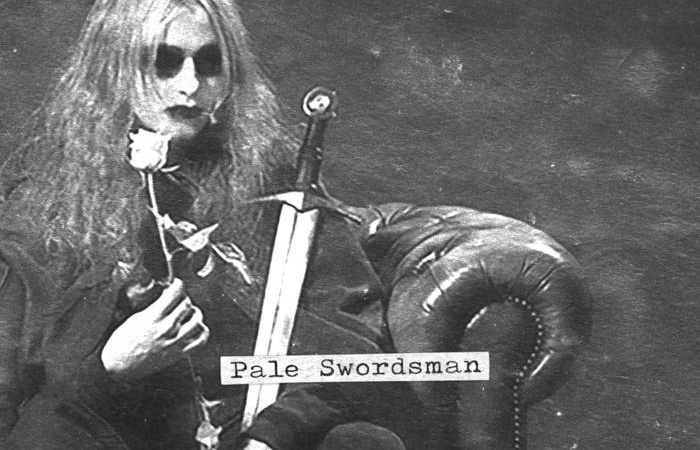If you’ve ever wondered what it might feel like to sit alone in a long abandoned church building on a snow-covered countryside and ponder the limits and extremities of life, have a listen to Pale Swordsman, the richly compelling new album from the Ukrainian melancholic black metal project Këkht Aräkh.
The record feels strikingly immersive thanks to the organic incorporation of atmosphere-setting feedback and the flaming passion driving the work. It’s like a musical portrait of a single inexplicable fire reaching up towards the shadowy post-nightfall sky in some ice-coated wilderness. Lacerating sonic winds course through the work — but the warm fervor and the commitment to feeling the heat are real.
The artist behind this project, which is a mostly one-person endeavor, utilizes abrasive raw black metal that feels shot through with wrenching pangs of malaise. Overall, the sparse straightforwardness of some of the arrangements alongside the focused and striking nature of the melodies cultivates a sense of solitude.
Ultimately, the music is profoundly emotive — the metal elements convey a sense of ragged desperation, especially at moments like the particularly dynamic track “In the Garden,” and Këkht Aräkh expands the familiar raw and wintry black metal palette to include dirge-like piano melodies, mournful plucked guitars, and more. Among other similarly toned moments, tracks five and six — “Amor” and “Nocturne” — feature gentler instrumentation that feels like an experience of making it in from the cold and finding nothing but lonesome sadness. The album, while immensely powerful, isn’t particularly unwieldy, and it doesn’t seem nihilistic. Instead, it’s a personal portrait.
There’s a sense of pained resignation to the weight of some personal burden, but there’s also what feels like a jarringly full-on acknowledgement of underlying strain. The guitars themselves sometimes sound like they’re wailing, and the lyrics help fill out the picture — on “Thorns,” the project’s creator tells a story of the aftermath of a love interest’s death, concluding on an existentially somber note: “Her hands are the same cold as mine/ But I’m forever cursed to be alive.”
Across Pale Swordsman, Këkht Aräkh seems to explore the contrast between a soul-rending search for some kind of relief and the continuous onslaught of time, in which a certain eventual demise (in death) is inescapable (at least, for those other than the figure at the center of the lyrical stories on the record). Throughout the album’s often existentially strenuous journey through a piercing blizzard, the central flame never dies, with a continuous undercurrent of emotional passion expressed via poignant melodies.
After an intro track centered on peacefully somber piano playing, Pale Swordsman moves into relatively scorching black metal — but the vibes in these respective segments really aren’t all that far off from one another. “Thorns,” the first metal-oriented track, even features a stream of lighter tones flowing through the somewhat oppressive mix.
In the metal segments, Këkht Aräkh sticks to a mostly brisk pace, as though facing off with currents of actual icy wind while standing alone in a cemetery like the one referenced in the lyrics on “Thorns.” There and elsewhere, lots of the riffing has a rather formidable edge within the foggy feedback.
The transitions between the diverse sonic pieces on Pale Swordsman are smooth, and the album ends with “Swordsman,” a piano-centered track featuring aching clean singing. Across the album, there’s an inviting warmth in the passion.
Pale Swordsman by Këkht Aräkh is available via Livor Mortis.
5/5 Stars
Listen below!
You may also like
-
Diana Kurz at Lincoln Glenn in New York: A Review of a Shining Art Exhibition
-
Dustin Hodges at 15 Orient in New York City: An Ensnaring Exhibition at an Exciting Gallery
-
Maren Hassinger at Susan Inglett Gallery in New York: Reviewing an Uplifting Art Exhibition
-
Enzo Shalom at Bortolami in New York City: Reviewing an Entrancing Exhibition of Paintings
-
“Ben Werther: Townworld” at Amanita in New York City: Reviewing a Richly Memorable Art Exhibition
